Hanga Roa is the only town at Rapa Nui. It is interesting to visit the Anthropological Museum Fr. Sebastian Englert, it is dedicated to the Rapa Nui cultural patrimony coservation. The Church that celebrates Sunday mass has attractive Rapa Nui chants, the mass is translated into English and Spanish. The Handicrafts Market and the fishing Cove are recomended.
It is possible to see most of the interesting sites on the island in few hours. Cars, bicycles and horses can be hired. Several services for excursion tours of the island in mini buses are provided.
Outside Hanga Roa is Rano Kau Volcano, it has a large crater 1,5 km diameter, that composes the southwest point of the island. Its highest border is easily more than 300 meters hight. At the southwestern side of the island is the ceremonial village of Orongo, here the island's most important ceremony was carried out in the past, and the investiture of the "Tangata Manu" or Birdman.
The interior and exterior walls of Rano Raraku Volcano crater served as the quarry from which "Moai" were sculptured.
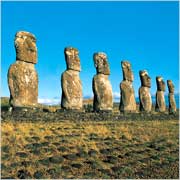
Vinapu site located at the east on the coastal route, has two temples. The site boasts seven "Moai". The archeological sites "Hanga Poukura" and "Akahanga" are located nearby. These stone giants that are always looking towards inland were erected on platforms called "Ahu".
Anakena, the main beach of Rapa Nui located in the northern coast, and it is famous for its white sand and clear water.
Hanga Roa the capital were most of the Rapa Nui people live is located at Hanga Roa Bay, on the southestern coast of the island. It has two main roads "Policarpo Toro" and "Te Pito Te Henua", where public, comercial institutions, and all the services and found. Hanga Roa as a highly tourist place offers a variety of accomodations from confortable Hotels to nice guest houses. Most accommodations on Easter Island are in guest houses. Tourism office is at Anakena square.
Hanga Roa Cove or "Tai"
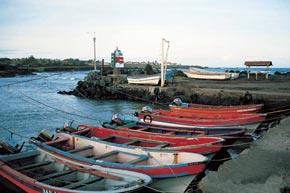
A small Cove located on Costanera Avenue, built between 1966 and 1967 with stones that were used for building the "Ahu". This place is used for loading and unloading of fishing, rent boats for touring different spots in the island and for sports activities, like diving excursions.
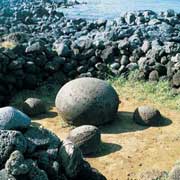
Te Pito o Te Henua Quarry
The word "Pito" means navel, and "Henua" means earth. This is a perfectly rounded stone that the ancient Rapa Nui believed to be the navel of the world. It is located to the left of the Ahu Te Pito Kura. Access by bicycle, on horse or foot.
Poike
Hill that constitutes the eastern point of the island. Its summit reaches 370 meters. Of great historical and anthropological value, it was the zone where the Hanau E'epe lived, hefty bodied people that introduced the tattooing technique to the island. Access by taxi, motorbike, bicycle, on horse or foot.
Motu Kao Kao
One of the three small, rocky islet near the ceremonial site of "Orongo", the closest to the coast.
Motu Iti
A small islet, situated farther from the coast than Motu Kao Kao. Lit "small islet".
Motu Nui
Islet located behind Motu Iti, separated from it by a narrow channel. Lit "big islet". Young people participating in the "Tanata Manu" ceremony used to swim to the islet to looking for the "Manutara" eggs.
The Island's Caves "Ana"
A fascinating aspect of Easter Island is its extensive cave systems. While there are a couple of caves that are quite interesting in their own right, there is also real adventure to be had in exploring all of the numerous unofficial caves on the island, most of which are found near Ana Kakenga. While the openings to most of these caves are small and hidden, many of them open up into large and inhibitingly deep. These caves can be dangerous in that quite a few run extremely deep. A person left without a torch or flashlight will be immersed in utter blackness with little hope of finding their way out soon. The caves are also extremely damp and slippery.
Some of the most important caves "Ana" are:
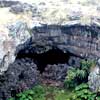
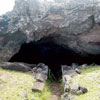
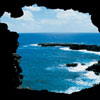
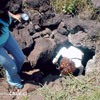
The biggest tourist attractions on Easter Island are, the "Moai". Often "Moai" will be placed upon ceremonial platforms and burials called Ahu. Do not walk on the Ahu as it is an extremely disrespectful gesture.The sites are mostly found along the coastline of the island. Each village typically had an ahu if not several moai, and thus on a drive around the south coast of the island, every mile contains several sites where you might see ruins.
Rano Raraku Volcano

The quarry at "Rano Raraku" the volcanic craters is where the moai carvings were born. This 300 foot volcano remnant provided the stones for the great figures and is where a visitor can see various stages of the carving, as well as scattered partially finished figures. A climb to the left side of the crater, over the top, and into the bowl, is well worth it. Hiking to the opposite lip of the crater, where the most "Moai" are found, is one of the most dramatic sites on the island. Rano Raraku volcano is located 15 km northeast of Hanga Roa, near the Hotu Iti bay. The Rano Raraku volcano is made up of gray ochre volcanic tufa. The volcano has a crater on the top with a lake that is 50 m deep.
The Rano Kau, this is a volcano, it is a Chilean National Park site, so you will have to pay an entry fee to really look around. Even without entering the park, there is a great view of most of the island from this vantage point.
Anakena

"Anakena", main beach of Rapa Nui, located on the north side of the island, is an excellent shorebreak bodysurfing location with a bit of north swell. The island's first king "Ariki Hotu Matua disembarked at Anakena beach. The second is a small beach called "Ovahe", located on the northern coast, close to "Anakena". It is known for its pink sand.
Ovahe
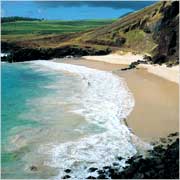
Also there is another beach, it is a gem so hidden, it doesn't even have a name. Found along the southern shore of the island near Ahu Vaihu, along the road from Hanga Roa to Ahu Akahanga, this beautiful and desolate beach is much larger than that at Anakena and is surrounded by breathtaking cliffs. The path leading down to the beach is somewhat treacherous and unstable and best reached by foot.
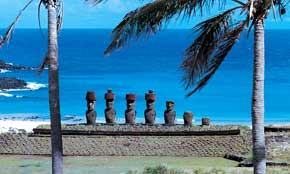
» Ahu Nau Nau and Anakena Beach.
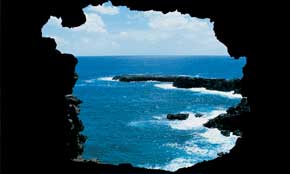
» Ana Kakenga Cave.

» Anakena Beach, palms.

» Hanga Roa cove or Tai.
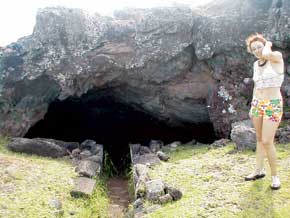
» Access Ana Kai Tangata cave.

» Poike peninsula.
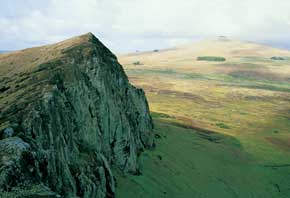
» Poike peninsula.
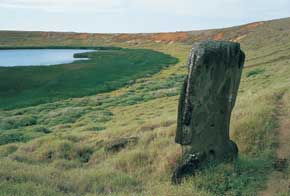
» Moai looking inside of Rano Raraku volcano.
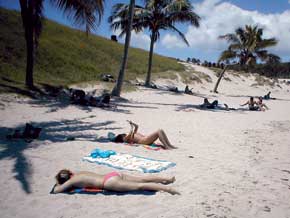
» Tourists in Anakena beach.